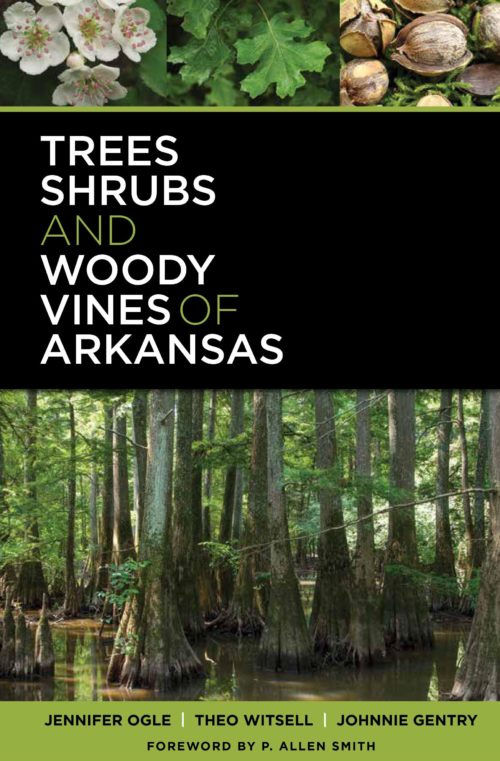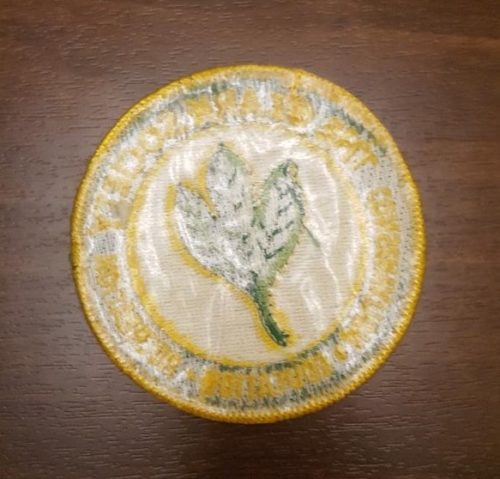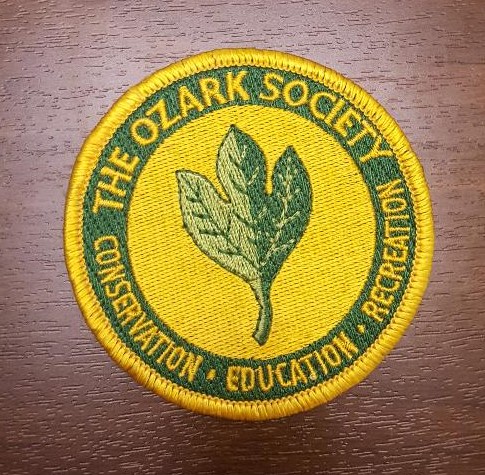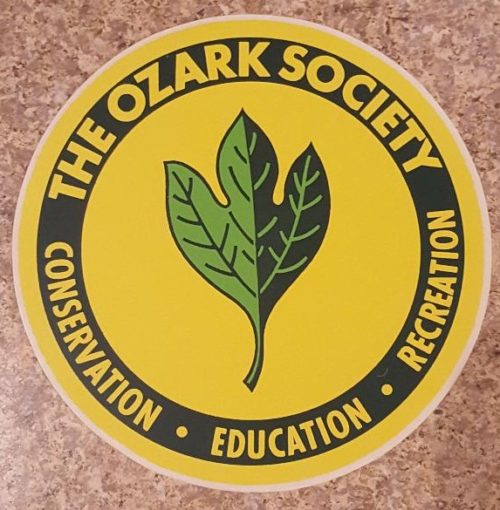-
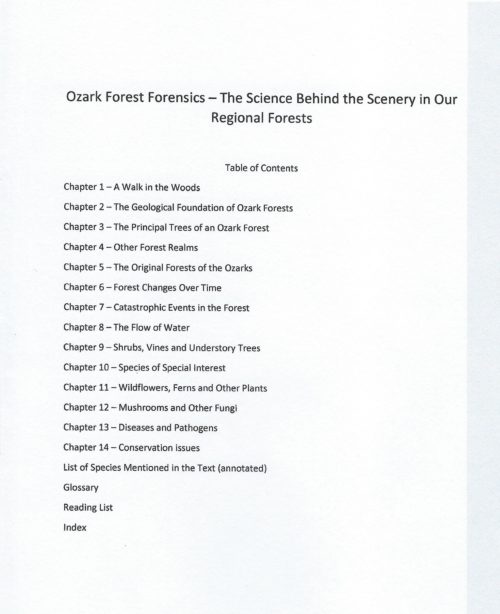
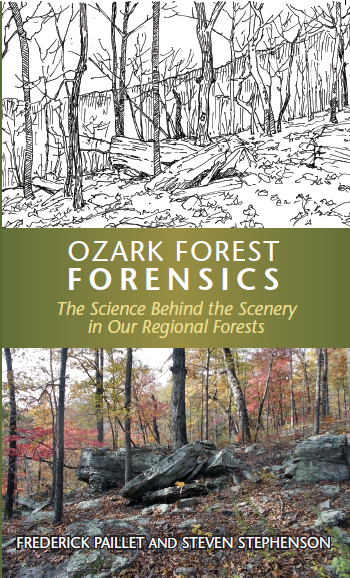 This book interprets our natural surroundings in a way that enhances a simple walk in the scenic deciduous woodlands of the Ozark Mountain region. Explanations go beyond trees and their habitat to include other diverse subjects: the leaf litter beneath a hiker’s feet, strategies used by wildflowers for pollination and seed dispersal, diseases that can ravage our forests, and forces active in the landscape that impact conservation efforts. Simplified line drawings demonstrate specific points of interest in a way that visually cluttered photographs cannot do. Includes: 163 line drawings, a list of species used in the text, a glossary, and a reading list.
This book interprets our natural surroundings in a way that enhances a simple walk in the scenic deciduous woodlands of the Ozark Mountain region. Explanations go beyond trees and their habitat to include other diverse subjects: the leaf litter beneath a hiker’s feet, strategies used by wildflowers for pollination and seed dispersal, diseases that can ravage our forests, and forces active in the landscape that impact conservation efforts. Simplified line drawings demonstrate specific points of interest in a way that visually cluttered photographs cannot do. Includes: 163 line drawings, a list of species used in the text, a glossary, and a reading list. -
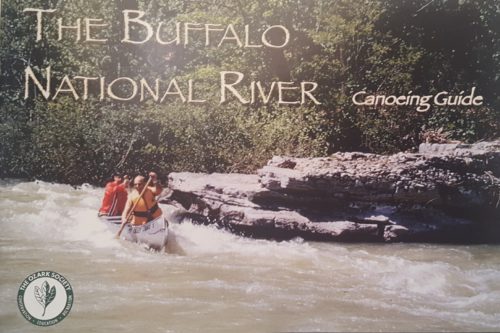 Complete revision of The Buffalo National River Canoeing Guide, this is the 4th revised edition of this classic guide, done by members of the Ozark Society, dedicated to Harold and Margaret Hedges. This guide includes all aspects of the Buffalo River experience, including safety tips, equestrian trails, the GPS Coordinates for points along the river, and topographic maps and narrative river logs.
Complete revision of The Buffalo National River Canoeing Guide, this is the 4th revised edition of this classic guide, done by members of the Ozark Society, dedicated to Harold and Margaret Hedges. This guide includes all aspects of the Buffalo River experience, including safety tips, equestrian trails, the GPS Coordinates for points along the river, and topographic maps and narrative river logs. -
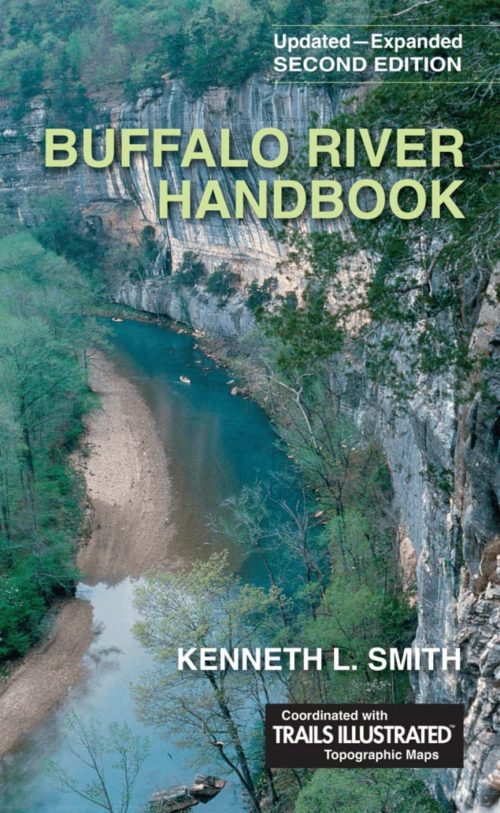 The highly anticipated second edition of the Buffalo River Handbook, written by Kenneth L. Smith, updates and expands the first edition initially published in 2004. The new edition includes the recently completed 28-mile segment of the Buffalo River Trail from U.S. Hwy 65 (Grinder’s Ferry) to AR Hwy 14 (Dillard’s Ferry) along the Buffalo National River in north Arkansas. Updates and revisions throughout the book describe the current setting with respect to campsite information and amenities, status of historic structures, and geologic conditions of the river and trails. Ken Smith—conservationist, park planner, and the designer and construction supervisor of most of the eighty miles of the Buffalo River Trail—brings to light in this edition his discerning engineer’s intellect, his photographer’s eye, his love for the outdoors as well as the people and land of the Ozarks and the Buffalo National River, and his passion for the protection and active exploration of our natural resources. An inductee into the Arkansas Tourism Hall of Fame in 2017 for his conservation efforts, Smith offers a three-part guide to the river, complete with maps, diagrams and photographs: insights on geology, wildlife, plants, Native Americans, pioneers, and the history of the development of the Buffalo River as the first National river; a detailed guide describing the entire 146-mile length of the river itself; and a guide for over 150 miles of hiking trails. The Buffalo River Handbook, 2nd edition, is a comprehensive reference encyclopedia, a trail and float guide, and a cultural history of the area of north Arkansas that encompasses the Buffalo River—a jewel in the crown of undammed, free-flowing rivers in Arkansas and the nation.
The highly anticipated second edition of the Buffalo River Handbook, written by Kenneth L. Smith, updates and expands the first edition initially published in 2004. The new edition includes the recently completed 28-mile segment of the Buffalo River Trail from U.S. Hwy 65 (Grinder’s Ferry) to AR Hwy 14 (Dillard’s Ferry) along the Buffalo National River in north Arkansas. Updates and revisions throughout the book describe the current setting with respect to campsite information and amenities, status of historic structures, and geologic conditions of the river and trails. Ken Smith—conservationist, park planner, and the designer and construction supervisor of most of the eighty miles of the Buffalo River Trail—brings to light in this edition his discerning engineer’s intellect, his photographer’s eye, his love for the outdoors as well as the people and land of the Ozarks and the Buffalo National River, and his passion for the protection and active exploration of our natural resources. An inductee into the Arkansas Tourism Hall of Fame in 2017 for his conservation efforts, Smith offers a three-part guide to the river, complete with maps, diagrams and photographs: insights on geology, wildlife, plants, Native Americans, pioneers, and the history of the development of the Buffalo River as the first National river; a detailed guide describing the entire 146-mile length of the river itself; and a guide for over 150 miles of hiking trails. The Buffalo River Handbook, 2nd edition, is a comprehensive reference encyclopedia, a trail and float guide, and a cultural history of the area of north Arkansas that encompasses the Buffalo River—a jewel in the crown of undammed, free-flowing rivers in Arkansas and the nation. -
Out of stock
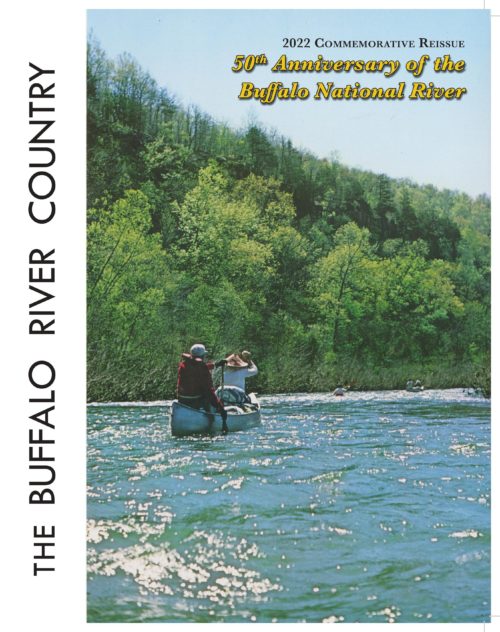 Kenneth L. Smith Edited by Janet Parsch This 2022 Commemorative Reissue of The Buffalo River Country includes…
Kenneth L. Smith Edited by Janet Parsch This 2022 Commemorative Reissue of The Buffalo River Country includes…- A Foreword by Suzie Liles and Jim Liles, National Park Service (retired)
- The complete text from the 3rd edition (1976)
- “Past and Future” -- The revised chapter from the three editions in 1967, 1970, and 1976 describes the status and progress on the legislation that created the Buffalo National River in 1972
- 13 maps and 150 photos
-
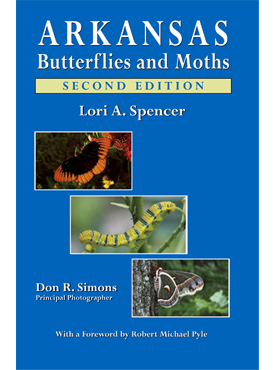
Arkansas Butterflies and Moths, 2nd edition, includes 264 species of butterflies and moths found in Arkansas. Species identification is facilitated through detailed text entries alongside 300 full-sized color photographs. And, for the first time ever, all butterfly species in the state are included. Many live photographs and shots of larvae are used, and butterfly gardening and prime butterfly-watching locations in the state are covered.
-
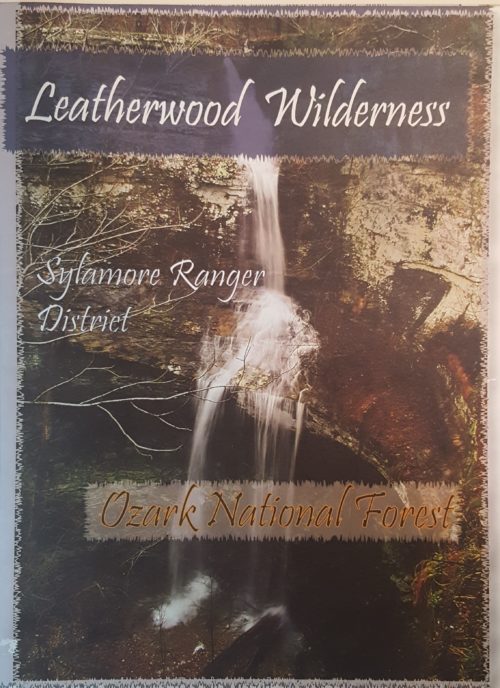 The Ozark Society, in cooperation with the U.S. Forest Service, has produced a series of new Arkansas Wilderness maps. These GPS friendly maps use UTM grids and the standard topo scale of 1:24,000. The Ozark Highland Trail and private inholdings are very clearly marked and valuable contact information and Leave No Trace camping tips are included. The maps feature the photography of Tim Ernst. For the first time, an entire wilderness area can be viewed on one map.
The Ozark Society, in cooperation with the U.S. Forest Service, has produced a series of new Arkansas Wilderness maps. These GPS friendly maps use UTM grids and the standard topo scale of 1:24,000. The Ozark Highland Trail and private inholdings are very clearly marked and valuable contact information and Leave No Trace camping tips are included. The maps feature the photography of Tim Ernst. For the first time, an entire wilderness area can be viewed on one map. -
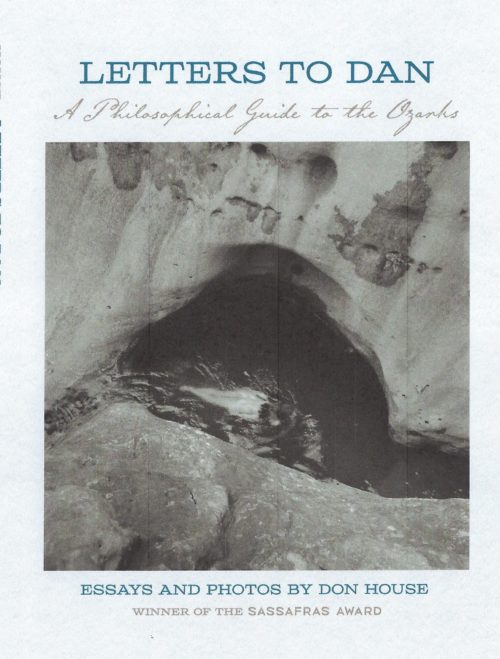 Letters To Dan: A Philosophical Guide to the Ozarks, written by Don House, is a series of essays and photos about the Ozark Mountains of Arkansas. It is the winner of the Ozark Society Sassafras Award in Literature. The guideposts for this journey are the region's rivers and hills, it's forests and vibrant wildflowers. In personal essays and photographs, Don House describes old cemeteries, abandoned buildings, and highway memorial crosses. He introduces us to a neighbor skilled at dowsing, to local cafe owners and river guides. The essays express a love of the region's heritage and it's modern culture. The book creates a sense of place and shows us how to live in harmony with the natural world. $20.00 ISBN 978-0-912456-12-6
Letters To Dan: A Philosophical Guide to the Ozarks, written by Don House, is a series of essays and photos about the Ozark Mountains of Arkansas. It is the winner of the Ozark Society Sassafras Award in Literature. The guideposts for this journey are the region's rivers and hills, it's forests and vibrant wildflowers. In personal essays and photographs, Don House describes old cemeteries, abandoned buildings, and highway memorial crosses. He introduces us to a neighbor skilled at dowsing, to local cafe owners and river guides. The essays express a love of the region's heritage and it's modern culture. The book creates a sense of place and shows us how to live in harmony with the natural world. $20.00 ISBN 978-0-912456-12-6 -
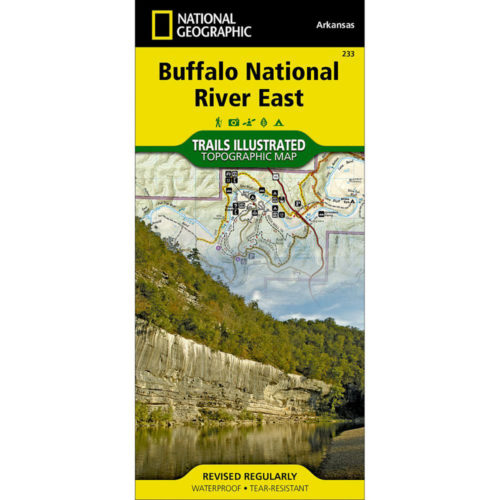
This map, first published by Trails Illustrated in 1992-93, uses USGS topographic maps as a base. T.I. has added hiking and horse trails, roads, campgrounds, and other features not shown on the 1960s vintage USGS maps. Also shown are routes of access to river and wilderness, and floaters’ car shuttle routes. Map users will find it easy to calculate the mileage of any trail hike or river trip and will see information for hikers, floaters, horseback riders, for anyone wanting to explore the Buffalo. The map is printed in four colors on waterproof, tear-proof plastic. Map design and text are by Ken Smith, author of Buffalo River Handbook and The Buffalo River Country, with cooperation from the National Park Service and U.S. Forest Service. This map includes the Leatherwood and Lower Buffalo Wilderness Areas. -
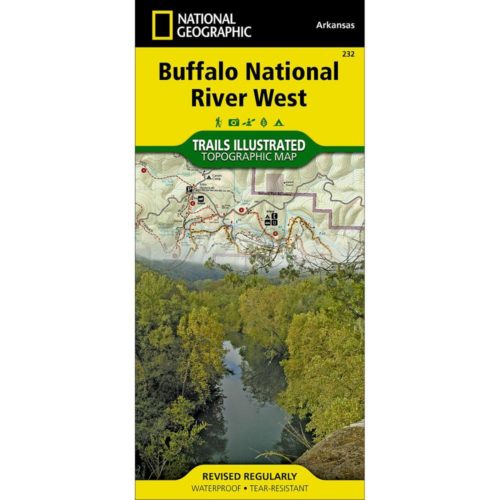
This map, first published by Trails Illustrated in 1992-93, uses USGS topographic maps as a base. T.I. has added hiking and horse trails, roads, campgrounds and other features not shown on the 1960s vintage USGS maps. The map includes routes of access to river and wilderness, and floaters’ car shuttle routes, and map users will find it easy to calculate the mileage of any trail hike or river trip. Included is a list of day hikes graded by difficulty and information for hikers, floaters, horseback riders, for anyone wanting to explore the Buffalo. This map is printed in four colors on waterproof, tear-proof plastic. Map design and text are by Ken Smith, author of Buffalo River Handbook and The Buffalo River Country, with cooperation from the National Park Service and U.S. Forest Service.

